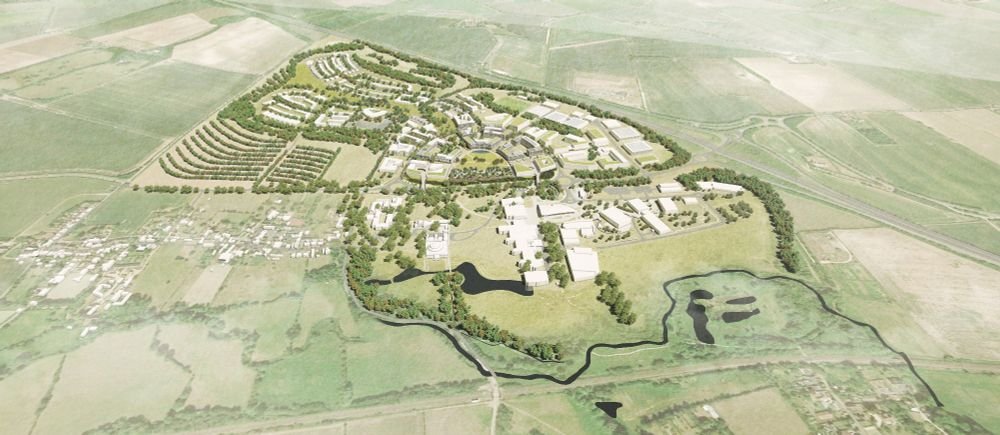
Ben Lehner
@BenLehner
Head of Generative and Synthetic Genomics @sangerinstitute; Systems + Synthetic Biology @CRGenomica; Co-founder http://barcelonacollaboratorium.com http://allox.bio
Could #AI be a game-changer for #BiologicalResearch? Join us for #AIxBio25, our new conference on the transformative potential of #AI and #MachineLearning, in shaping the future of medical science. 📅Save the date: 23-25 June 2025 📎 Find out more: bit.ly/4gh164E
Only a few days left to apply to become a group leader in our Generative Biology programme at @sangerinstitute sanger.ac.uk
New preprint: Allostery is a widespread cause of loss-of-function variant pathogenicity by the great @liao_xiaotian biorxiv.org/content/10.110….
Arriving at the airport to fly to an AI conference and this happens #AIxBio25

The evolution of allostery in a protein family. New preprint from the brilliant @ainamartiaranda. Seven complete allosteric maps. biorxiv.org/content/10.110…
Alzheimer’s disease 🧠starts with a molecular domino effect - but what triggers the first piece to fall? In our new study we cracked open the black box of early protein aggregation, and the findings could reshape how we fight neurodegeneration. 🧵👇 science.org/doi/10.1126/sc…
Come and join us! We’re hiring a new Group Leader in Generative Biology at the @sangerinstitute Building AI models or the data to train them? Core funding of >$130M a year for a faculty of ~30. pls RT! nature.com/naturecareers/… acrobat.adobe.com/id/urn:aaid:sc…

New publication. We quantify the aggregation of >100,000 random protein sequences to train CANYA, a convolution-attention hybrid neural network to predict aggregation from sequence. With @Bennibolo @CRGenomica @sangerinstitute @IBECBarcelona science.org/doi/10.1126/sc…
I’m excited to co-host the new #AIxBio conference alongside @Avsecz, @ferruz_noelia, @pdhsu, @BenLehner, @ml19, @deboramarks, @p_tingying, @CarolineUhlerat at @wellcomegenome/ @sangerinstitute! We’ll focus on modellingz and designing DNA, RNA, proteins, and cells, as well as…
3 great computational positions open at @ALLOXbio to work with the great @aj4re @JuliaDiumenge @pbcenturion @mseumaar
At @ALLOXbio we now have 3 computational positions available! 📌Structural Bioinformatics Scientist 👉 tinyurl.com/3rs46j4t 📌Platform Bioinformatician 👉 tinyurl.com/nyvazbke 📌Computational Chemist 👉 tinyurl.com/5n6vpem3 Apply or repost to help us spread the word 🙏
I’m delighted to share our work on scrambling the human genome using prime editing, repetitive elements, and recombinases @ScienceMagazine! @ferreira_raph_ @LeopoldParts @ProfTomEllis, @geochurch @SangerInstitute science.org/doi/10.1126/sc… Lots of changes from the preprint. A🧵
If you’d like to work in this exciting science area, @LeopoldParts lab at the @sangerinstitute is hiring postdocs! This is all part of the new Generative and Synthetic Genomics programme with nearby @benlehner and Jussi Taipale sanger.wd103.myworkdayjobs.com/en-US/Wellcome…
We are happy to share our enhancer scramble story, a strategy to create hundreds of stochastic deletions, inversions, and duplications within mammalian gene regulatory regions and associate these new architectures with gene expression levels 🧵 @LeopoldParts, Pierre Murat
Introducing Human Domainome v1, the largest and most comprehensive library of human protein variants to date, which maps the effects of +500K mutations across 522 domains. The study by @BenLehner and Toni Beltran @mutatoni is out in @Nature. ✍️ Illustration by @QueraltTolosa
Protein instability is the main driver of inherited genetic conditions, according to the largest map of protein variants to date − Human Domainome 1.0🔎 This dataset can help predict how proteins behave, paving the way for new treatments💊 sanger.ac.uk/news_item/huma…
Site-saturation mutagenesis of 500 human protein domains: nature.com/articles/s4158…
The first ‘human domainome’ reveals the cause of a multitude of diseases. An ingenious large-scale experiment in Barcelona (by @mutatoni & @BenLehner) has led to the creation of a catalog detailing the effects of half a million DNA mutations: english.elpais.com/science-tech/2…
We think this demonstrates massive potential for pharmacological chaperones for treating a large number of individuals with a broad range of genetic diseases. Check out the pre-print here: biorxiv.org/content/10.110…
MoCHI: neural networks to fit interpretable models and quantify energies, energetic couplings, epistasis, and allostery from deep mutational scanning data • This study introduces MoCHI, a tool designed to analyze deep mutational scanning (DMS) data by fitting interpretable…
Can a single small molecule rescue the stability of nearly all mutations in a protein? Our new preprint by @taylor_mighell + thread biorxiv.org/content/10.110…
A major challenge in treating rare genetic diseases is the huge number of causal variants in different individuals. This led to assumptions that any given treatment would be suitable only for a small fraction of patients